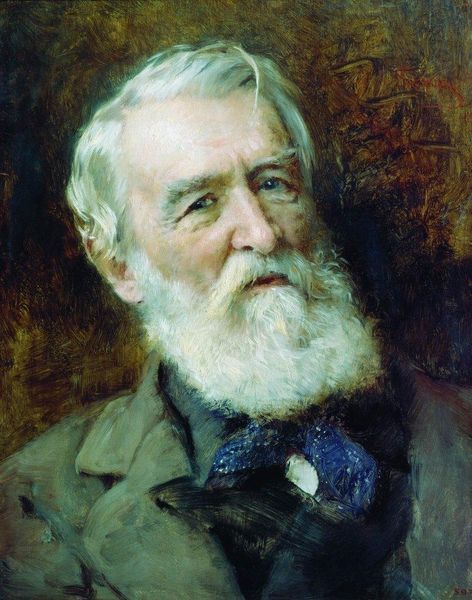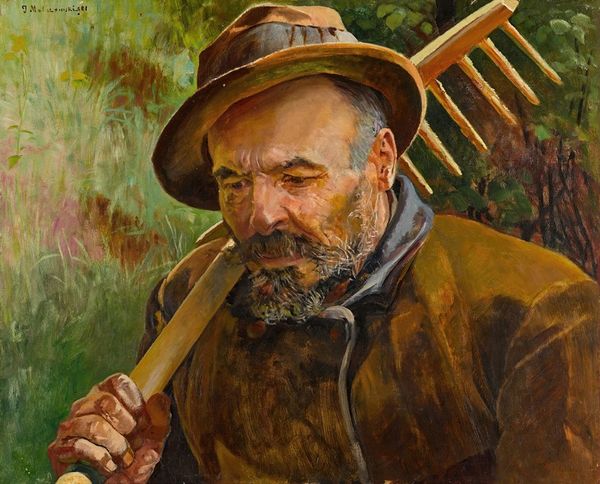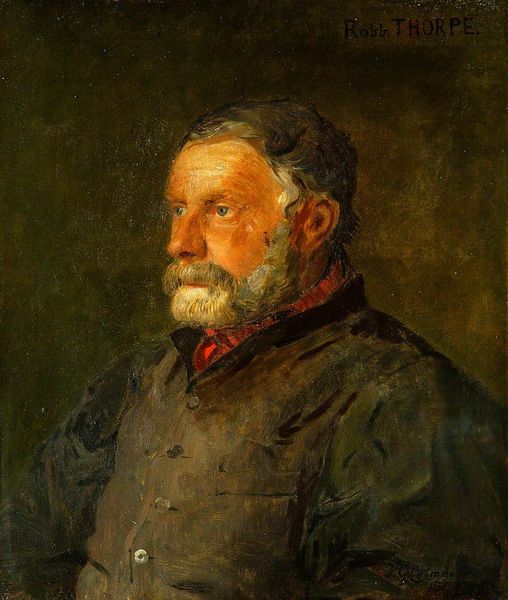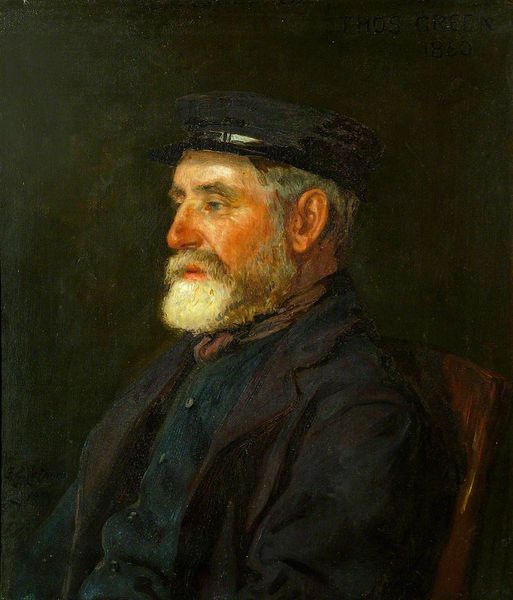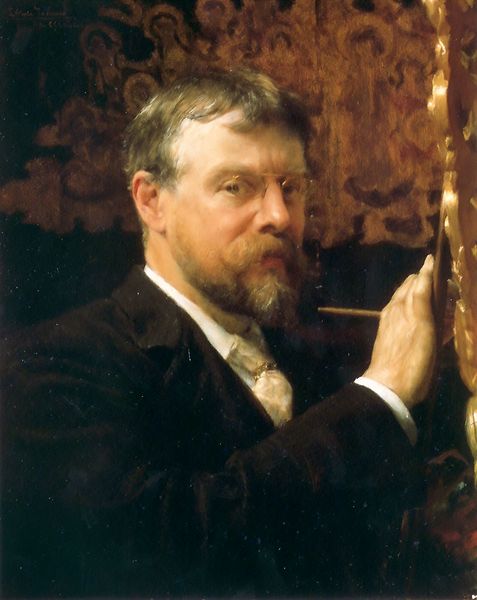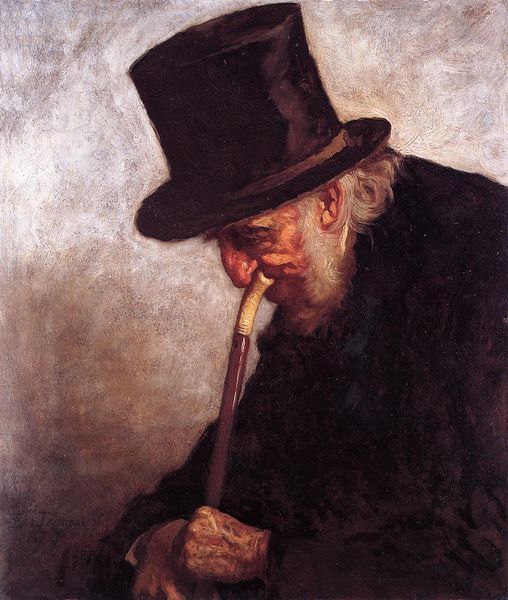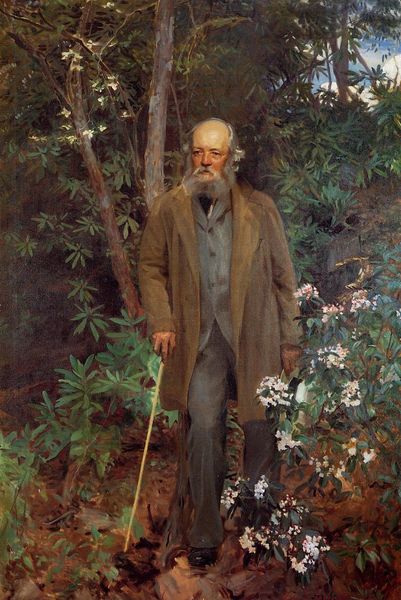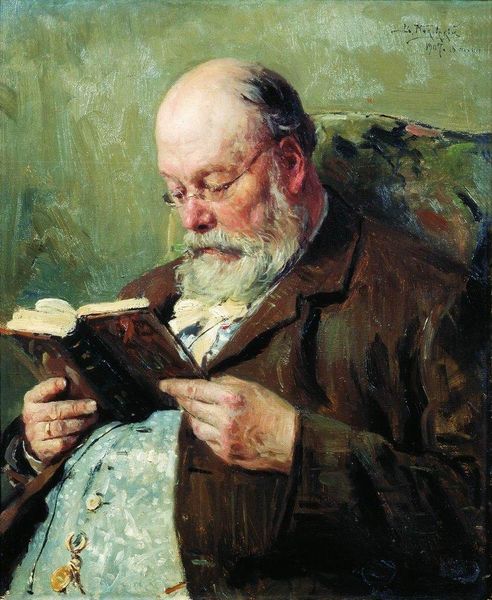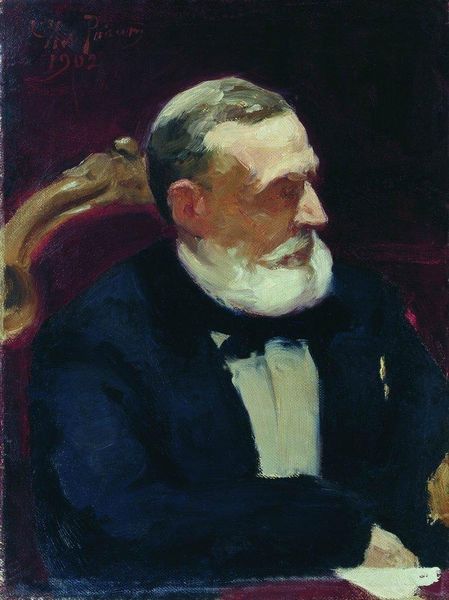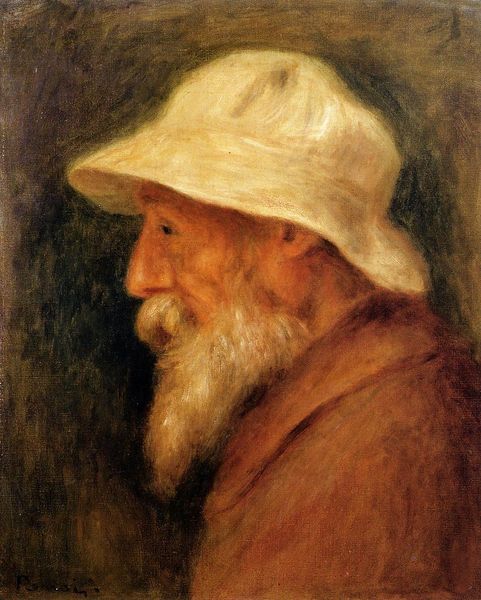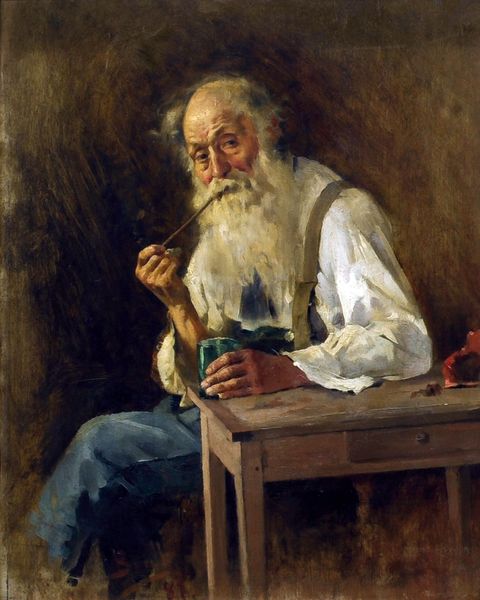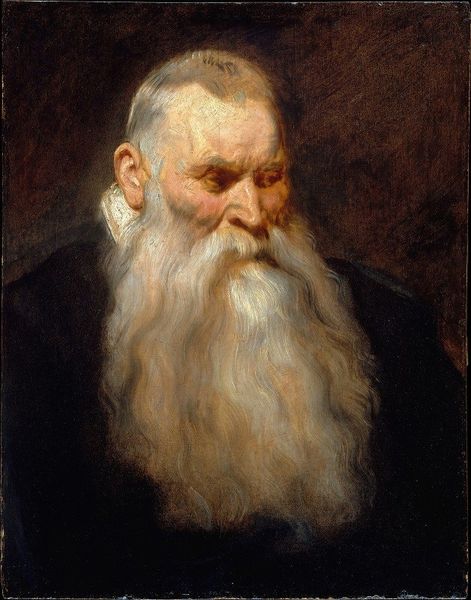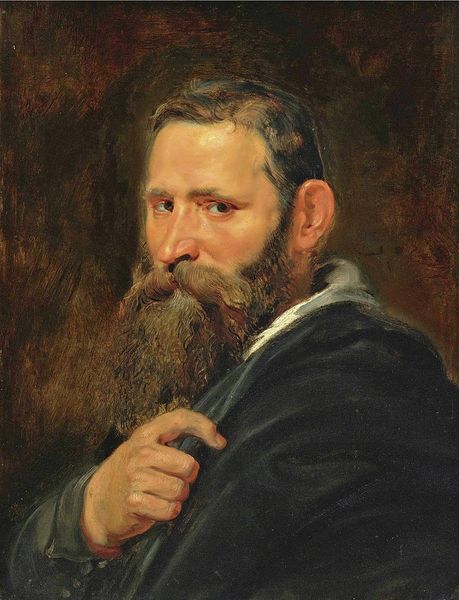
Copyright: Public domain
Editor: We’re looking at “George Chatten,” painted in 1899 by Frederick George Cotman, in oil paint. The subject is an older gentleman holding what appears to be a mallet. It feels like a very human, very direct portrayal. What do you see in this piece? Curator: I see the weight of a life lived, etched in the subject's face. The mallet is key here. Is it merely a tool, or something more? Tools represent our capacity to shape the world, but also our reliance on physical labor. Consider how hands, especially working hands, feature in art. Editor: So, it’s about manual labor and how that’s represented? Curator: Potentially. It makes me think about social class. The gaze is direct, honest, perhaps challenging. There’s a dignity in the representation, isn't there? This isn't just a portrait; it's a statement. Cotman might be saying something about the value of labor, about respecting those who work with their hands. What does his clothing suggest? The loosely fitted coat hints at his casual nature but could represent his need to prioritize function over formal dress. Editor: It's interesting to consider the social implications of the mallet and his clothing. It’s more than just a portrait, you're right. Curator: Precisely. Look also at how light illuminates his face. Consider this: How has the portrayal of hands changed in art, reflecting societal attitudes towards labor and craftsmanship across different eras? What happens when tools replace hands? Editor: It's fascinating how one image can hold so many layers of meaning, making us think about work and social class in 19th century England. Curator: Exactly. The image speaks; we need to learn how to listen.
Comments
No comments
Be the first to comment and join the conversation on the ultimate creative platform.
